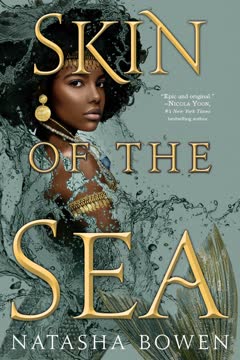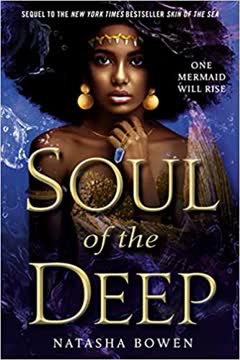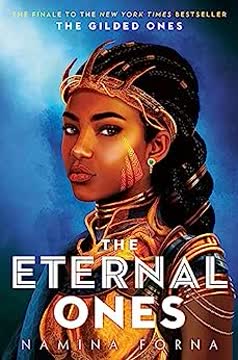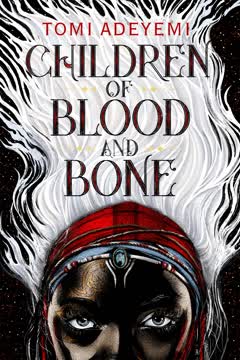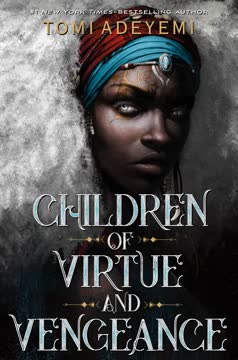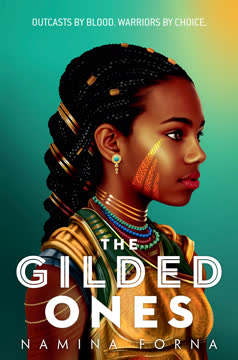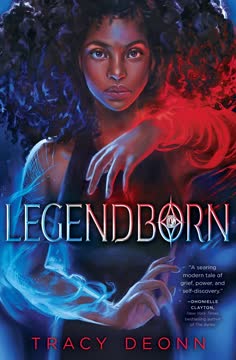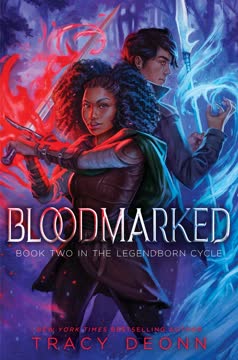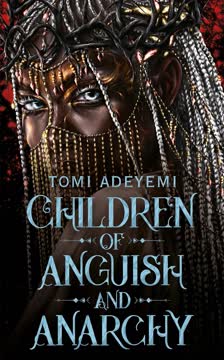Plot Summary
Beneath the Slave Ship
Simidele, a Mami Wata—an African mermaid created by the orisa Yemoja—swims beneath a slave ship, her task to collect the souls of those who die at sea and bless them on their journey to Olodumare, the Supreme Creator. She is tormented by memories of her human life, which the sea tries to erase, and by the suffering she witnesses. When she gathers the soul of a woman who reminds her of her mother, Simi is flooded with grief and longing for her past, but she clings to the memory, refusing to let the sea take it completely. The chapter sets the tone of sorrow, duty, and the tension between memory and forgetting.
Blessings and Memories
Simi brings the soul she has gathered to Yemoja's island, performing the ritual to bless it. She meets Folasade, another Mami Wata, who urges her to let go of her human past and embrace her new purpose. Simi, however, is drawn to the land, where her memories are clearer. She transforms into human form, basking in the sun and recalling her mother's stories and the warmth of her family. The act of blessing souls is both a comfort and a burden, and Simi's struggle to reconcile her new identity with her lost humanity is palpable.
Forbidden Rescue
During a storm, Simi witnesses a boy, Kola, thrown from a slave ship, still alive and chained. Instinctively, she saves him, defying Yemoja's strict command to only gather the souls of the dead. Simi brings Kola to Yemoja's island, tending to his wounds and hiding him from the other Mami Wata. This act of compassion is a transgression that threatens the balance between the orisas and Olodumare's decree. Simi's empathy and refusal to let another life be lost set in motion a chain of consequences that will endanger her and all she loves.
Kola's Awakening
Kola awakens on the island, confused and wary of Simi, whom he has seen in both mermaid and human form. Their interactions are tense, marked by mutual suspicion and the trauma of Kola's recent enslavement. Simi cares for him, using her knowledge of healing plants, and Kola gradually reveals his desperation to return home to his family and village, Oko. The two form a fragile alliance, bound by necessity and a growing, unspoken connection. Simi's guilt over breaking the rules is matched by her determination to help Kola survive.
Secrets and Promises
Kola pleads with Simi to help him summon Yemoja, believing the orisa's power can return him home. Simi is torn between her loyalty to Yemoja and her compassion for Kola. She agrees to help, knowing the risk, and together they prepare the ritual. The night before, they share stories and vulnerabilities, deepening their bond. Simi's memories of her own family and Kola's longing for his siblings intertwine, highlighting themes of loss, hope, and the cost of survival. The promise to summon Yemoja is both a hope and a looming threat.
Summoning Yemoja
The ritual succeeds, and Yemoja appears, magnificent and terrifying. She is furious at Simi for saving a living soul and revealing herself to a human. The orisa explains the ancient decree: orisas must not interfere directly in human fate, only bless the dead. Simi's act has broken this law, endangering all Mami Wata and Yemoja herself. The goddess reveals the scars of her own punishment and the ever-watchful presence of Esu, the trickster orisa. Simi is devastated but pleads for forgiveness and guidance, determined to make things right.
The Living Boy's Plea
Kola reveals the true urgency of his quest: his twin siblings, Taiwo and Kehinde, are Ibeji—divine twins whose presence brings abundance to Oko. Their safety is vital not just to his family but to the land itself. Simi learns that the only way to seek forgiveness from Olodumare is to find two powerful rings, hidden by a babalawo (priest), which can summon the Supreme Creator. Simi and Kola set out together, joined by the promise of redemption and the hope of saving both the living and the dead.
The Orisa's Warning
Yemoja warns Simi that loving a human will doom her to become sea foam, and that Esu seeks the rings for his own power. Simi is given a magical dagger and instructions to travel in human form, hiding her true nature. The journey is fraught with danger, both from supernatural threats and the growing feelings between Simi and Kola. The tension between duty and desire, fate and free will, becomes ever more acute as they draw closer to Oko and the heart of the conflict.
Journey to Forgiveness
Simi and Kola are joined by new companions—Bem, Yinka, and the mischievous yumboe Issa—as they travel through forests, rivers, and magical realms. They face shape-shifting bultungin, the monstrous Ninki Nanka, and the deadly sasabonsam. Along the way, Simi's memories return in fragments, and the group's bonds are tested by betrayal, loss, and the ever-present threat of Esu. The journey is as much about self-discovery and healing as it is about the quest for the rings and forgiveness.
The Babalawo's Truth
The babalawo reveals that the rings have been given to the Ibeji twins, who are now missing—taken by Esu. The twins' power is the source of Oko's abundance, and their loss has already begun to blight the land. Simi learns that the rings amplify orisa power and that Esu seeks them to rival Olodumare. The only way to save the twins, the land, and the Mami Wata is to confront Esu on his island, a place of monsters and illusions. The group steels themselves for the final confrontation, knowing not all will survive.
Oko in Peril
Returning to Oko, Simi and her companions find the land dying, the people desperate, and the twins gone. The villagers are suspicious and fearful, and Kola's family is torn by grief and blame. Simi's presence as Mami Wata is both a blessing and a source of unease. The urgency to rescue the twins and restore balance is heightened by the suffering all around them. The group prepares for the journey to Esu's island, gathering weapons, supplies, and courage for the trials ahead.
The Ibeji's Disappearance
Guided by Issa, the group traverses perilous forests and rivers, facing both natural and supernatural threats. They are attacked by the Ninki Nanka, nearly drowned, and forced to confront their own fears and failings. The loss of Issa, who is killed by a sasabonsam, and the sacrifice of Yinka, who stays behind to hold off the bultungin, weigh heavily on Simi and Kola. The journey becomes a crucible, forging their resolve and clarifying what is truly at stake.
Through Forest and River
The group faces a series of escalating dangers: monstrous hyenas, treacherous bridges, and the ever-present threat of Esu's magic. Simi's powers are tested, and her connection to both the sea and her human past deepens. The companions are forced to rely on one another, and the cost of their quest becomes ever more apparent. The boundaries between human and orisa, love and duty, blur as they draw closer to Esu's stronghold.
Monsters and Betrayals
On Esu's island, the group is betrayed from within: Ifedayo, the trusted guard, is revealed to be Esu in disguise. The trickster orisa has manipulated them all along, seeking the rings and the twins for his own ambition. In a climactic confrontation, Simi and Kola fight Esu, but the cost is high—Kola is gravely wounded, and the twins are in mortal danger. Simi must make an impossible choice, risking everything for a chance at redemption.
Esu's Island
Simi bargains with Esu, challenging him with a riddle that plays on the concept of infinity and the repeating patterns of African knowledge. In a desperate gambit, she pulls Esu into the sea, where Olokun, the orisa of the deep, binds him in chains. The price of Olokun's help is Simi's own freedom—she must serve him in the Land of the Dead, forever separated from the world above. The battle is won, but at a terrible cost.
The Trickster Unmasked
With Esu defeated, Simi uses the rings and the twins' power to summon Olodumare and plead for forgiveness. The Supreme Creator grants mercy, restoring balance to the land and the sea. Kola is brought back from the brink of death by the twins' magic, but Simi knows her time in the world above is over. She says a final, heartbreaking farewell to Kola, choosing duty and sacrifice over personal happiness.
Sacrifice and Salvation
Simi honors her bargain with Olokun, descending into the depths to serve as guardian of the dead. She buries the bodies of those lost at sea, offering prayers and comfort to their souls. The pain of separation from Kola is acute, but Simi finds meaning in her service, knowing she has saved countless lives and honored the memory of those she loved. Her journey is one of transformation, from human to Mami Wata to something more—a bridge between worlds.
The Price of Mercy
In the aftermath, Simi reflects on the cost of her choices and the meaning of mercy. She finds solace in the rituals of burial and blessing, and in the knowledge that her sacrifice has brought peace to the living and the dead. The story ends with Simi embracing her new role, her memories of Kola and her family both a source of pain and a wellspring of strength. The sea is vast, but Simi's heart is vaster still.
Characters
Simidele (Simi)
Simi is the protagonist, a teenage girl transformed by Yemoja into a Mami Wata after dying on a slave ship. Tasked with gathering and blessing the souls of those who die at sea, Simi is defined by her empathy, stubbornness, and longing for her lost humanity. She is deeply affected by the suffering she witnesses and the memories of her family, which the sea tries to erase. Simi's journey is one of self-discovery, as she grapples with the boundaries between duty and desire, human and orisa, love and sacrifice. Her forbidden rescue of Kola sets the plot in motion, and her willingness to risk everything for others marks her as both heroic and tragically isolated. Simi's psychological arc is one of acceptance—of her power, her pain, and her place as a bridge between worlds.
Kola (Adekola)
Kola is a young man from the village of Oko, thrown from a slave ship and saved by Simi. Traumatized by violence and enslavement, he is fiercely protective of his twin siblings, Taiwo and Kehinde, whose divine nature is the key to his village's prosperity. Kola is resourceful, courageous, and sometimes impulsive, driven by guilt and a sense of responsibility. His relationship with Simi is complex, marked by suspicion, gratitude, and a growing, forbidden love. Kola's journey is one of healing and redemption, as he confronts his own limitations and ultimately sacrifices himself for his family and community. His psychological depth lies in his struggle to reconcile vulnerability with strength, and his willingness to trust and be changed by Simi.
Yemoja
Yemoja is the orisa of the sea, creator of the Mami Wata, and a figure of both nurturing and stern authority. She is marked by the scars of her own punishment for defying Olodumare's decree, and her love for humanity is both her strength and her vulnerability. Yemoja's relationship with Simi is maternal but fraught, as she urges her to let go of the past and embrace her new purpose. She is a symbol of the cost of compassion in a world governed by harsh rules, and her psychological complexity lies in her simultaneous power and powerlessness. Yemoja's arc is one of sacrifice, as she risks everything to ease the suffering of the enslaved and the lost.
Esu
Esu is the antagonist, a shape-shifting orisa who embodies chaos, crossroads, and the ambiguity of fate. He is both messenger and saboteur, driven by jealousy, ambition, and a desire to rival Olodumare. Esu's psychological makeup is defined by insecurity masked as bravado, and a deep resentment of the limitations placed on him. His manipulation of Simi and her companions is both cunning and cruel, and his ultimate defeat is a result of his own hubris. Esu's role as both villain and necessary force in the cosmic order adds layers of moral ambiguity to the story.
Taiwo and Kehinde (The Ibeji)
Taiwo and Kehinde are Kola's younger siblings, incarnations of the Ibeji orisa. Their presence brings prosperity to Oko, and their abduction by Esu threatens the balance of the land. The twins are both vulnerable children and powerful symbols, their innocence contrasted with the weight of their destiny. Kehinde, in particular, is clever and resourceful, hiding her ring to thwart Esu. Their psychological depth lies in their simultaneous fear and courage, and their role as both victims and agents of restoration.
Bem
Bem is Kola's childhood friend, a fisherman's son who joins the quest out of loyalty and love. He is physically strong, emotionally open, and often the peacemaker in the group. Bem's psychological arc is one of acceptance—of his own worth, his place in the community, and the pain of loss. His willingness to sacrifice himself for others is both his strength and his vulnerability.
Yinka
Yinka is a member of Oko's guard, trained as a fighter and marked by her loyalty to Kola and Bem. She is haunted by guilt over Kola's initial capture and driven by a need to prove herself. Yinka's psychological complexity lies in her struggle with identity—her possible connection to the bultungin shape-shifters—and her willingness to sacrifice herself for the group. Her arc is one of self-acceptance and courage in the face of overwhelming odds.
Issa
Issa is a fairy-like child who guides Simi and Kola through the forest, providing both comic relief and moments of wisdom. His death at the hands of the sasabonsam is a turning point, marking the loss of innocence and the real cost of the quest. Issa's psychological role is to embody hope, loyalty, and the pain of sacrifice.
Olokun
Olokun is a powerful, enigmatic orisa, imprisoned in the depths of the sea for attempting to destroy the land. He is both a figure of terror and a reluctant ally, helping Simi bind Esu in exchange for her service. Olokun's psychological makeup is defined by loneliness, bitterness, and a longing for respect. His relationship with Simi is transactional but tinged with a recognition of shared suffering.
Folasade
Folasade is another Mami Wata, devoted to Yemoja and the rules of their existence. She urges Simi to let go of her human past and embrace her new identity. Folasade's psychological role is to embody the comfort and constraint of tradition, and her presence highlights Simi's isolation and difference.
Plot Devices
Orisa Mythology and African Cosmology
The novel is structured around the cosmology of Yoruba and West African myth, with orisas as gods and intermediaries, and Olodumare as the Supreme Creator. The rules governing the orisas—especially the prohibition against interfering directly in human fate—create the central conflict. The use of African folklore, including Mami Wata, Ibeji, bultungin, yumboes, and monsters like the Ninki Nanka and sasabonsam, grounds the story in a rich mythic tradition. The narrative is episodic, with each trial or encounter serving as both plot advancement and thematic exploration.
Memory, Identity, and Transformation
Simi's struggle to remember her human life, and the way the sea erases or preserves memory, is a recurring motif. Her ability to shift between mermaid and human form is both a literal and metaphorical device, representing the tension between past and present, duty and desire. The gradual return of her memories parallels her journey toward self-acceptance and agency.
Forbidden Love and Sacrifice
The growing bond between Simi and Kola is marked by the threat of annihilation—if Simi acts on her love, she will be destroyed. This forbidden romance heightens the stakes and emotional intensity, culminating in Simi's ultimate sacrifice: choosing duty and the greater good over personal happiness. The motif of sacrifice recurs throughout, with multiple characters giving up safety, freedom, or life for others.
Trickster Antagonist and Betrayal
Esu's role as trickster is central, both in the plot and in the novel's structure. His ability to disguise himself, manipulate events, and exploit the weaknesses of others creates suspense and uncertainty. The revelation that Ifedayo is Esu in disguise is a key twist, and the use of riddles and games as both plot device and thematic exploration of knowledge, power, and infinity is crucial.
Ritual, Prayer, and Symbolic Objects
Rituals—summoning Yemoja, blessing souls, seeking forgiveness—structure the narrative and mark turning points. The sapphires, rings, and magical dagger are plot devices that both empower and constrain the characters. The use of African fractals and patterns as both literal and metaphorical keys (e.g., the bridge puzzle) reinforces the novel's themes of repetition, infinity, and interconnectedness.
Foreshadowing and Narrative Echoes
The novel uses foreshadowing extensively: Yemoja's warnings, Simi's memories, and the recurring motif of the sea as both destroyer and redeemer. Events and choices echo throughout the narrative, with earlier sacrifices and losses prefiguring later ones. The structure is cyclical, with the ending mirroring the beginning—Simi beneath the waves, gathering souls, but changed by her journey.
Analysis
Natasha Bowen weaves a narrative that is both epic and intimate, blending the supernatural with the all-too-human realities of loss, survival, and hope. The novel interrogates the boundaries between duty and desire, tradition and change, and the cost of compassion in a world governed by harsh rules. Simi's journey is emblematic of the struggle to hold on to one's humanity in the face of dehumanizing forces, and her ultimate sacrifice is both a personal tragedy and a communal salvation. The use of African cosmology, fractals, and folklore not only enriches the world-building but also challenges Eurocentric narratives of heroism and magic. The novel's lessons are manifold: the importance of memory and storytelling, the necessity of resistance and solidarity, and the enduring power of love—even when it must be renounced. Skin of the Sea is a testament to the resilience of the oppressed, the complexity of forgiveness, and the possibility of transformation, both personal and collective.
Last updated:
Review Summary
Skin of the Sea receives praise for its rich West African mythology, beautiful prose, and diverse representation. Readers appreciate the blend of history and fantasy, particularly the portrayal of Black mermaids. The book's pacing, worldbuilding, and character development are generally well-received, though some find the romance underdeveloped. Critics note issues with cultural accuracy and character depth. Despite mixed opinions, many readers eagerly anticipate the sequel, drawn in by the cliffhanger ending and the potential for further exploration of African mythology and culture.
Skin of the Sea Series
Similar Books
Download PDF
Download EPUB
.epub digital book format is ideal for reading ebooks on phones, tablets, and e-readers.
